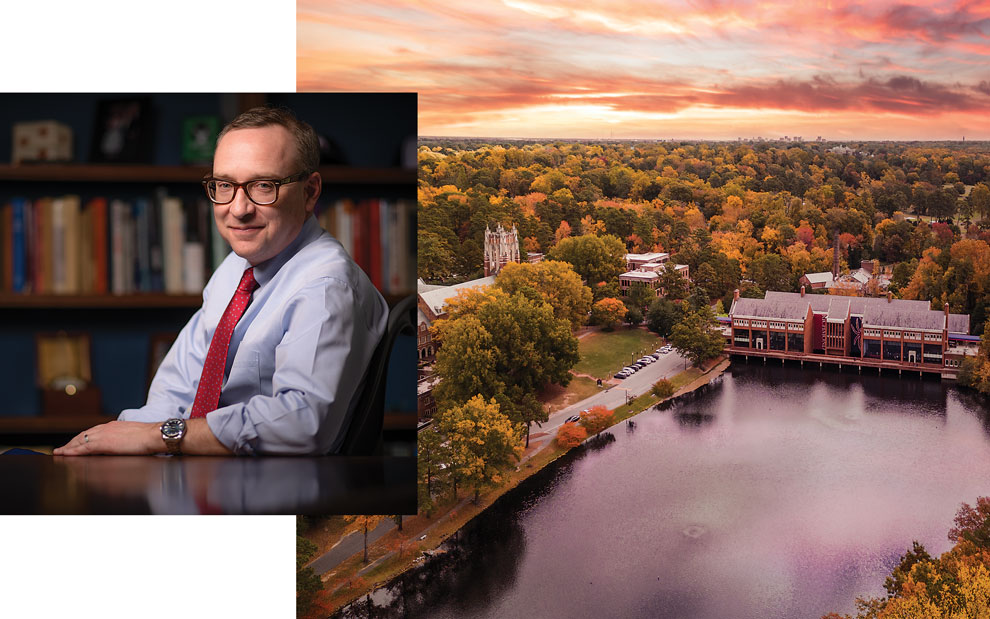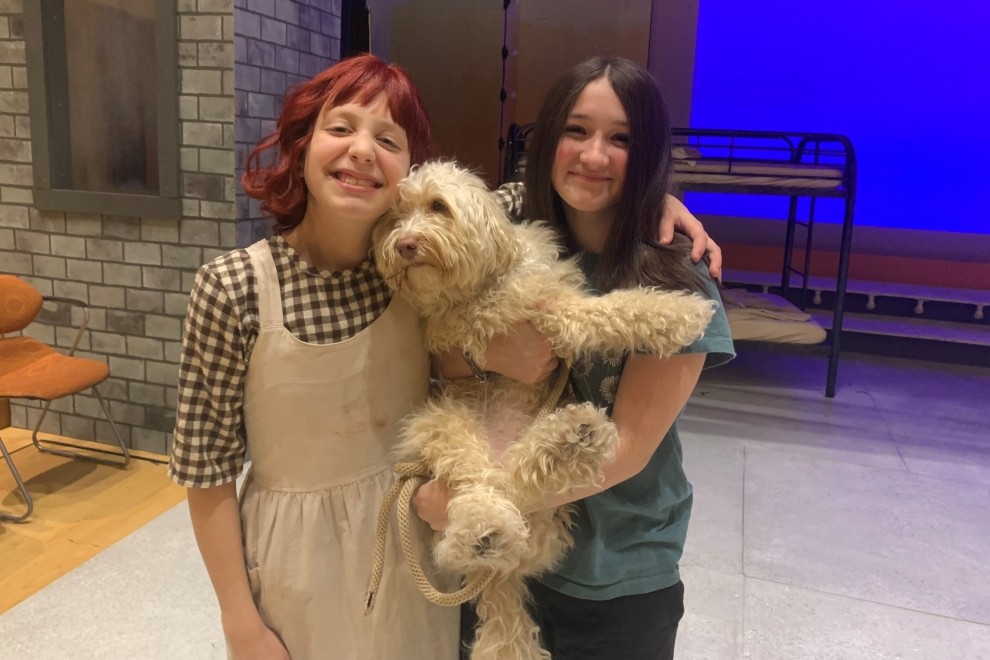Unexpected. That’s an apt description of the places you might find University of Richmond President Kevin Hallock, aside from his office. You’ll catch him in the crowd at sporting events dressed in spirit gear, in the announcer’s booth calling a baseball game with UR Chaplin Craig Kocher, or watching teams and coaches put in training hours on a practice field on the 350-acre campus.
You also might find Hallock in the classroom, teaching a first-year seminar on economics and trying to help students who are new to college feel at ease. An award-winning teacher and distinguished professor of economics, Hallock, who is beginning his third school year at UR in his first stint as a college president, wants to continue to have a presence in the classroom.
“It’s important to be empathetic and try to remember what it was like to be a student,” says Hallock, who starts class by telling students he is nervous and it’s okay if they’re nervous as well. If students feel like everyone else has it all figured out and they are wondering about their own futures, he continues, here’s the secret: “No one knows – and that’s okay.”
Hallock’s mindset when it comes to the UR community mirrors the U.S. Constitution’s “we the people” ideology. He considers UR’s people to be its greatest strength, he treasures their well-being, and he respects their opinions. As a leader, Hallock has made it clear that he wants students, faculty, and staff members to be an active part of the university and to have a voice in their education and their work.
His leadership style has not gone unnoticed. Hallock has “an earnest desire to connect to all constituents – students, staff, faculty, parents, alumni, prospective students, and their families,” says Beth Nash, a member of the UR Board of Trustees and the President’s Parent Leadership Council. “He spends considerable time seeking opportunities to do so and is very proud of the University of Richmond.”
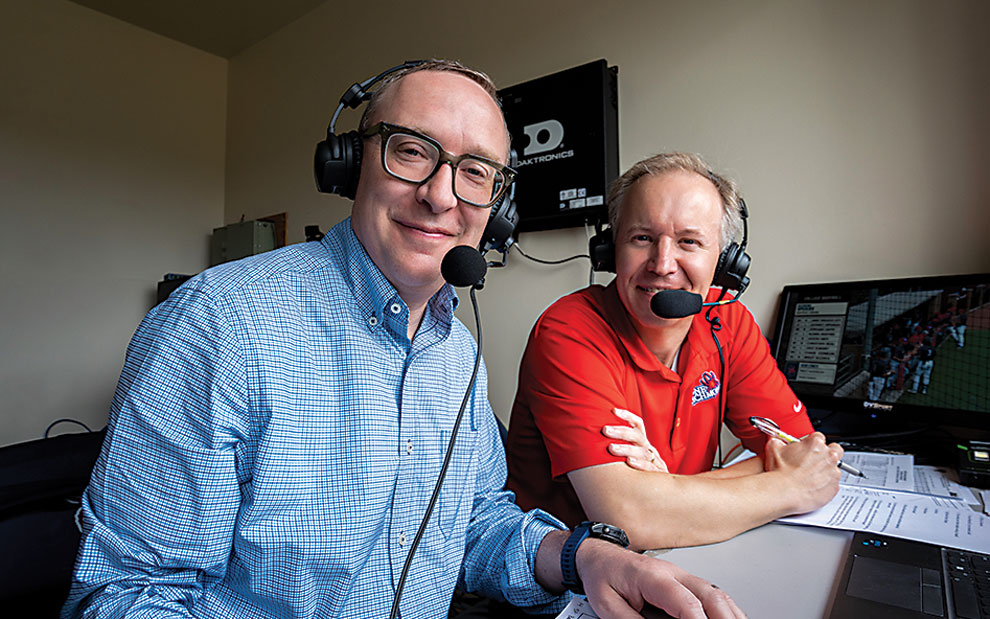
Lessons from Life and Sports in a Small Town
Perhaps Hallock’s genuine persona and love of education stem from growing up in a small farming community between two college towns in Western Massachusetts. There it was common for many of the kids to work on farms during the summer. Hallock followed suit, laboring some summers for six days a week on cucumber and tobacco farms. “It was sort of an expectation,” he says of working as a teen. “I later worked at a lumber yard, and I had a paper route.”
In high school, Hallock was an athlete who played baseball and soccer. His sophomore year stands out for two reasons. First, his baseball team had a winning season. Being part of that team taught him valuable lessons that he carries with him today.
“Determination, hard work, grit, supporting one another, and preparation.” Hallock reels off the lessons as he fidgets with a baseball during our interview, something he sometimes does when he’s talking to people. “That team was successful not because of the eight terrific athletes – plus me, I’m not terrific,” he interjects, “but because we were really well prepared. Also, our culture was just phenomenal. There were no mental errors on that team.”
As a teen, Hallock saw how important it was to be prepared and how that preparation made game days easier. He took that with him into the classroom, especially during exams. As a student, Hallock wasn’t a last-minute crammer because he was always prepared.
“That translates from athletics,” he says.
Hallock’s second reason for remembering his sophomore year came when a teacher suggested he might want to buckle down and become more serious about academics. “From that day on, I didn’t stop studying,” he says.
After high school, Hallock attended University of Massachusetts at Amherst, graduating in 1991, and then Princeton University, where he received his PhD in 1995. He focused on academics, specifically economics, opting to give up most extracurricular activities. It’s a decision he admits today wasn’t the best.
“I didn’t appreciate all that you can get from college – all the things you can learn outside the classroom,” he says. “I emphasize that with students. There is so much to be learned outside the classroom, especially in a place like University of Richmond.”
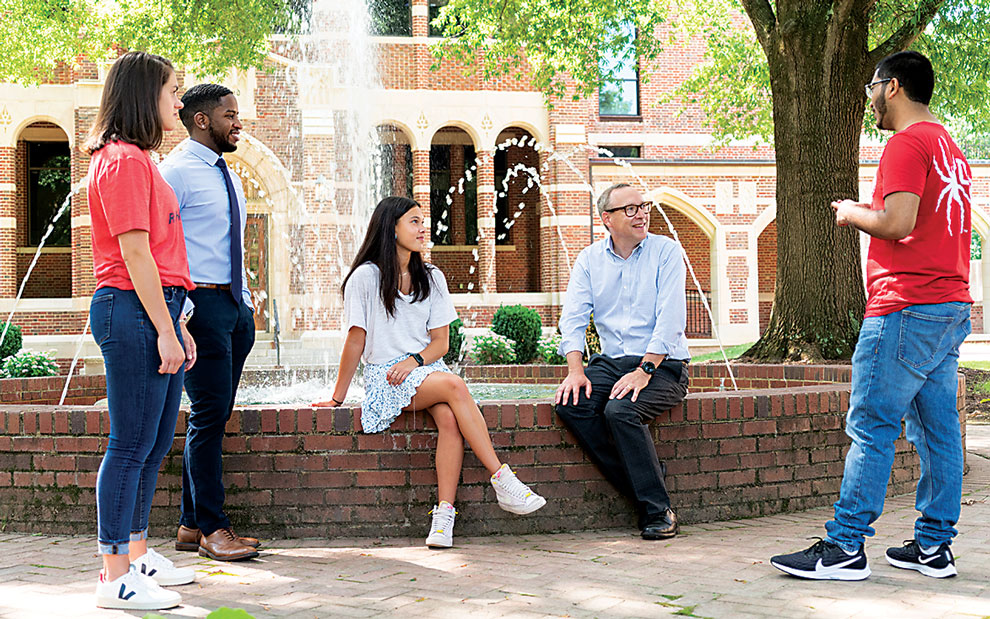
Kevin Hallock’s Road to the President’s Office
Hallock’s father laid a foundation for his son’s career in academia, says the younger Hallock who admits he always wanted to be a professor because of his father’s passion.
“[My father] loved his job. He just retired after fifty years on the same faculty. He still teaches a little,” Hallock says about his father, a physicist and professor. “I always thought that was a pretty good thing. It’s nice to love your job.”
A labor market economist and fellow of the National Academy of Human Resources as well as a research associate at the National Bureau of Economic Research, Hallock has always been intrigued by how and why people get paid.
“I am fascinated by that. I’m interested in unemployment, the stock market, and things like that,” he says, adding he launched the Institute for Compensation Studies at Cornell University, where he worked for sixteen years before joining UR in March 2021.
Hallock’s career has taken him from teaching at the University of Illinois at Urbana-Champaign to Cornell University, where he eventually became dean of the university’s SC Johnson College of Business, to UR, where he is serving as the institution’s eleventh president.
“I have been very lucky, and I have had really great mentors for a long time. Plus, I work really hard,” Hallock says.
Grateful for the support he has received from teachers and mentors along the way, Hallock acknowledges his wife Tina, his family, which includes two adult children, and “lots of people who were patient while I have been working. I am surrounded by wonderful people,” he says.
And, he continues, in such a wonderful place.
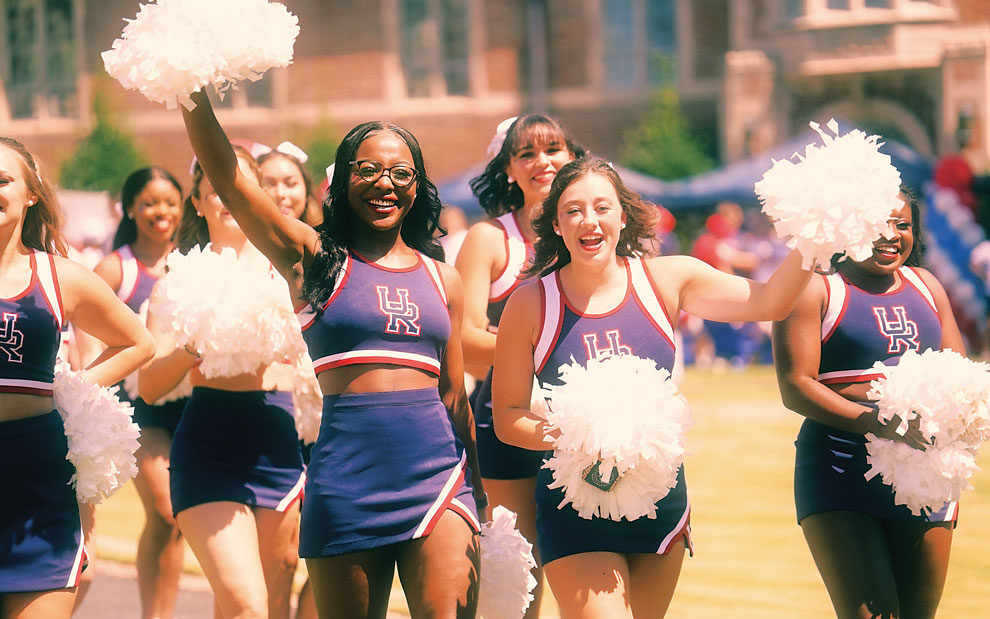
“Richmond is amazing,” he says. “We have enjoyed getting to know the arts and culture in the Richmond region. Part of what draws our faculty and students here is all the opportunities to engage with the university and the region.”
He has also found a welcoming community at UR. “We felt a sense of belonging. The transition was quite comfortable. We love being here. People made it easy for us,” he says. “We had a lot of help from a lot of people. I had such high expectations for the university, and they were all exceeded.”
When he greets new faculty members these days, he remembers how difficult it can be to move to a new community and a new position. “It’s important to pay attention to the [rest of the family] who isn’t working [for UR]. I was here at the university working many hours, and Tina wasn’t engaged in that. The people who were reaching out to us were being supportive of Tina, too,” he says.”
Over time, Hallock has learned he’s a creature of habit, which can make change difficult. “When I find things I like, I stick with it. I go to the same restaurants, and I order the same thing every time,” Hallock says.
That need for familiarity carried over to one of the most important life decisions a person can make. “I met my wife Tina when we were four, and we married at twenty-two. Maybe it’s a pattern,” he says jokingly, adding that Tina is “a wonderful person. She loves her family and wants to help others.”
Tina appreciates that despite her husband’s academic background, he is not all business all the time. “He’s so funny and everyone doesn’t know that. I love that about him,” she says.
Board of Trustees member Nash also caught a glimpse of Hallock’s sense of humor during a virtual interview for his position. “He was wearing a University of Richmond field hockey t-shirt over his collared professional attire,” says Nash, a wardrobe choice that was particularly clever considering “he knew I had three daughters on the Spider field hockey team.”
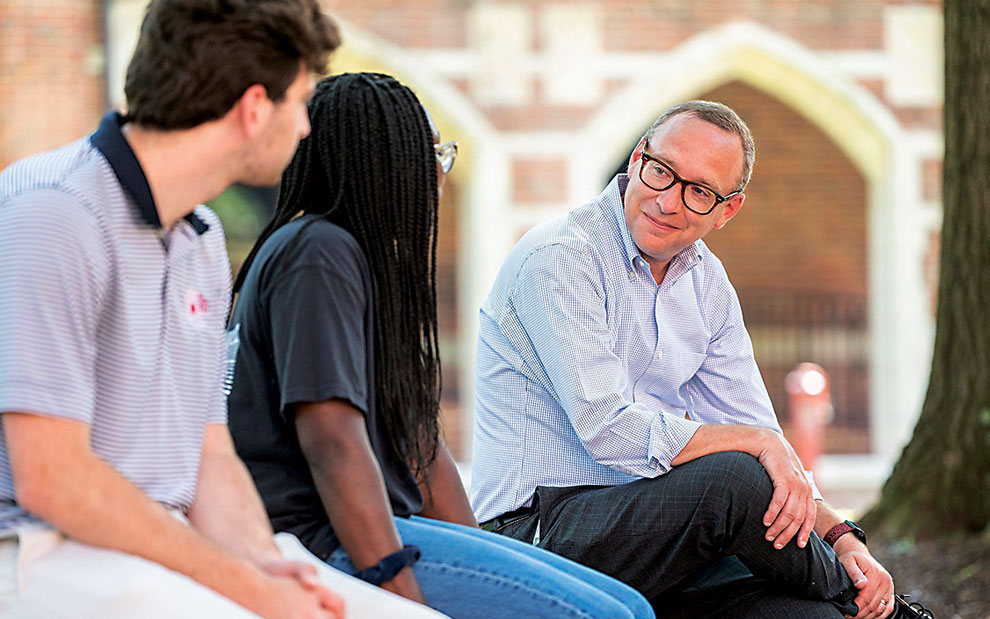
Just the Right Fit with University of Richmond
Hallock never envisioned himself as the president of a small private liberal arts college. “I wasn’t looking that far ahead,” he says. “It just sort of happened.”
When the opportunity presented itself during a nationwide search for the position and he decided to seriously consider the role, he visited the campus and “I couldn’t look away,” he says. That’s when Hallock knew UR was the right next step of his career.
UR’s enrollment is much smaller than Cornell University’s 15,000-plus students. And that turned out to be a benefit for Hallock.
University of Richmond’s size is perfect, he says. “It’s our strength. This university has about 4,000 students and 3,000 are undergraduates. It really is the ideal place for me. If you were to build a university from scratch, I think you would build this one.”
A 350-acre suburban campus located about six miles from downtown Richmond, the university is heavily integrated into the region, and Hallock wants it to be even more so. The five pillars of UR’s strategic plan, released in May 2023, include experiential learning and community engagement.
“We have lots of partnerships with nonprofit organizations, governmental entities, and businesses in the region. I would like those to become even deeper in both the city and surrounding region,” says Hallock, who has recently joined the board of the nonprofit Homeward, an organization focused on providing services to the homeless.
Because UR is part of the region’s fabric, with part of the campus within city limits and part in Henrico County, he wants it to be accessible to local and in-state students as well as out-of-state students. Hallock encourages students and families in the area to visit the campus at any time.
“We have a library, athletic events, museums, information sessions, and tours year-round. We visit high schools and attend college fairs to recruit students both from here and elsewhere,” he says.
Hallock acknowledges that when some people hear the word private associated with a university, they may think it’s too elite or expensive to even consider. But that’s not the case at UR.
“It’s important to remember we admit students without knowing [the student’s] ability to pay, and then we meet their full need,” he says. “Richmond’s Promise to Virginia [program] gives grant aid for tuition, housing, and food for Virginia students whose families make less than $60,000 a year. Any student, regardless of their means, can come here. We want students to thrive here.”

The Virginia Tuition Assistance Grant also supports Virginia residents who attend accredited private, nonprofit colleges, and universities in Virginia for eligible degrees other than religious training or theological education.
Having said that, it isn’t exactly easy to get admitted to UR. Considered highly selective with an acceptance rate hovering below 25 percent, last year, UR had about 830 slots for first-year students. The admissions teams received more than 15,000 applications.
“We don’t want to discourage anyone from trying. Last semester we were talking to high school students and telling them, ‘Don’t close your options until you find out what the real deals are. Look for the opportunities. Decide when you see the whole picture and what it will actually cost you,’” Hallock says. “All students should have the same opportunities.”
That includes students from around the world. One in ten students at UR is international.
Last year, the university had seventy-five nationalities represented on campus. “It’s quite incredible to have that many countries represented on a campus of our size,” he says.
What Hallock wants for students, faculty, and staff is the sense of welcome, belonging, and understanding he has experienced since coming to UR. “A university campus is a place to have open and difficult conversations,” he says. “We have to model that meaningful exploration in the exchange of ideas. We have to practice kindness, empathy, and patience as much as possible and strive to appreciate the sheer humanity behind opinions that differ from our own.”
In order to encounter those diverse perspectives, students at UR are exposed to various subjects that might be independent of their major. “Our business students are required to have a liberal arts foundation before taking business courses in earnest. That sets us apart,” he says. “It’s an important perspective for those students to have.”
As institutions of higher learning adapt to meet the changing needs of students, with Hallock as president, Board of Trustee member Nash believes UR is well-positioned to meet those needs. She says Hallock has stepped into the role of president seamlessly. “His resumé of leadership in higher education is extensive, but equal to that is his desire to connect to individuals, his honesty, and his willingness to not take himself too seriously. He is committed beyond measure to our university and community.”
Tina Hallock is a Mental Health Mama

Tina Hallock likes the fact that she and her husband are opposites in some ways. “I am perfectly smart, but he’s really smart and very intense,” she says. “I am not that intense. I tend to be pretty well-balanced. Maybe opposites attract that way.”
They are, however, alike in other ways. They both value their families – she is one of four siblings and he is one of two. “We have great parents,” says Tina. “I think about what Kevin has passed on to our kids.” The couple has two adult children, Emily and Tyler.
The Hallock also have professional education experience in common – she was an elementary school teacher – and they share a love of sports. Like Kevin, Tina was an athlete in school, playing basketball and softball. Sports help promote a sense of belonging, which is important to both Tina and her husband.
“You have your pack, your people,” she says. “It’s important, especially for women. We live in a culture where middle and high school can be hard for girls to find your people, not just fit in, but to belong.”
Tina has carried that philosophy of belonging over into the work she has done for a decade, supporting parents whose children have struggled with their mental health. Her interest sprang from personal experience as the parent of a child who was struggling.
“It’s very isolating. You think you are the only one. Often the term we use is ‘parents with kids who struggle.’ What we know is when our kids struggle, we struggle,” she says.
People need to know they are not alone. “There is a little bit of magic when you connect with someone who has had a similar experience and you know you are not alone. We are never alone.”
In the early stages of her commitment to mental health, Tina was meeting with folks in person to discuss parenting challenges and other issues related to mental health. When the pandemic hit, that wasn’t possible, although the need continued to grow. That’s when she and Serena Ward, a friend and now podcast-mate, launched the podcast Mental Health Mamas: No Need to Explain.
“We took the leap and decided to put this out in the world in November 2020. [The podcast] has become this ability to normalize mental health. In a way, it is touching people around the world,” says Tina. “We all have mental health, whether we are well or need support. People are really hearing that.”
The podcast focuses on making meaningful connections to help boost mental health. That’s also important when dealing with loneliness, a subject the pair will address on next season’s podcasts.
“It’s about the idea that meaningful connections can literally save people,” she says. “I think we all need to build our wellness box. That may include a lot of different things. Connection is key. We are all responsible for that. Every single one of us. We can all make connections with people. Connecting with people can be life-changing and life-saving for people.”


